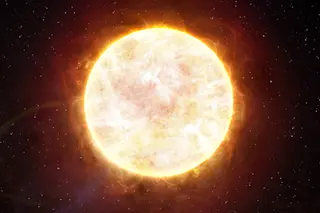Since its launch in 1997, the Cassini spacecraft has traveled more than 3.85 billion miles. It has sent back 450 gigabytes of data, including more than 300,000 images of stormy Saturn, its majestic rings, and its rich and complicated system of moons. But perhaps the most notable number of the mission is 1: That is how many people oversee the creation of what may well be the most remarkable photo album ever assembled.
Carolyn Porco is the one. As the leader of the imaging science team on the Cassini mission to Saturn, she oversees collection and analysis of all the high-resolution pictures the spacecraft sends home. She has also done more than anyone else to spread interest in Saturn and its intricately beautiful rings and moons. She shares Cassini’s discoveries with the public through a website and in regular emails to thousands of devoted followers. Her exploratory zeal comes through on her website, where entries begin, in guileless Star Trek style, “Captain’s Log.”
Looking through Cassini’s eyes, Porco has gazed at Saturn’s ring system, where untold trillions of particles jostle and collide, giving rise to eerie gaps, spokes, and shifting pileups. She has witnessed a 180,000-mile-long storm erupt across Saturn’s pale yellow atmosphere, encircling the planet and crackling with blue lightning. She was there as Cassini discovered lakes of liquid methane and ethane dotting the poles of Saturn’s giant moon Titan, which is larger than the planet Mercury.
And in perhaps the mission’s greatest surprise, Porco saw bright jets of water, tinged with organic chemicals, shooting from Saturn’s Colorado-size moon Enceladus. Once dismissed as a dreary, inert ball of ice and rock, it is now considered one of the most likely places in the solar system to find life. “I’m writing a paper on Enceladus, and it’s going to be one kick-ass paper,” Porco exults. “The geysering on Enceladus is the most astonishing phenomenon we have in our solar system.”

Courtesy of Carolyn Porco
Carolyn Porco
A route to discovery
Porco, who grew up in the Bronx, got her first glimpse of space through a telescope in a friend’s backyard at the age of 13. But it wasn’t stargazing alone that got her interested in astronomy. “Young kids were turning to Buddhism and yoga,” she recalls. “It’s that feeling of wanting to feel connected. My whole entry into astronomy started from a spiritual place.” She wondered about her place in the universe. “And that got me thinking: What is ‘here’?” Astronomy, she thought, was a way to discover what is “here”—and out there.
Through a stroke of good timing, Porco’s first job out of graduate school was working on the Voyager 2 spacecraft as it continued past Jupiter and Saturn to Uranus and Neptune during the 1980s. The mission, she says, was Homeric in scope, humanity extending its reach as far as it could.
And then, just as Voyager 2 was completing its planetary tour, NASA began work on a follow-up mission to Saturn. In 1990 Porco was named head of the imaging team for the new spacecraft, named after Giovanni Cassini, the Italian-French astronomer who discovered four of Saturn’s moons and a gap in Saturn’s rings, now known as the Cassini division. She has been there ever since.
If Voyager was an epic trek through uncharted territory, Cassini is a more permanent sojourn. The idea here was not to snap images while flying by, but to orbit Saturn for many years and come to know the place. The spacecraft has been so successful that its planned four-year mission, which began in 2004, has been extended twice, and it will now continue until at least 2017. In the accompanying gallery, Porco shares some of her favorite images from Cassini so far, the views that made her feel as if she is more than just a visitor to another world.
“We are the new Saturnians,” she says. “We’ve taken up residence and we watch things as they unfold.”
An insider look
Below, a collection of Porco's favorite snapshots of Saturn, its rings, and its strange and varied moons.
















